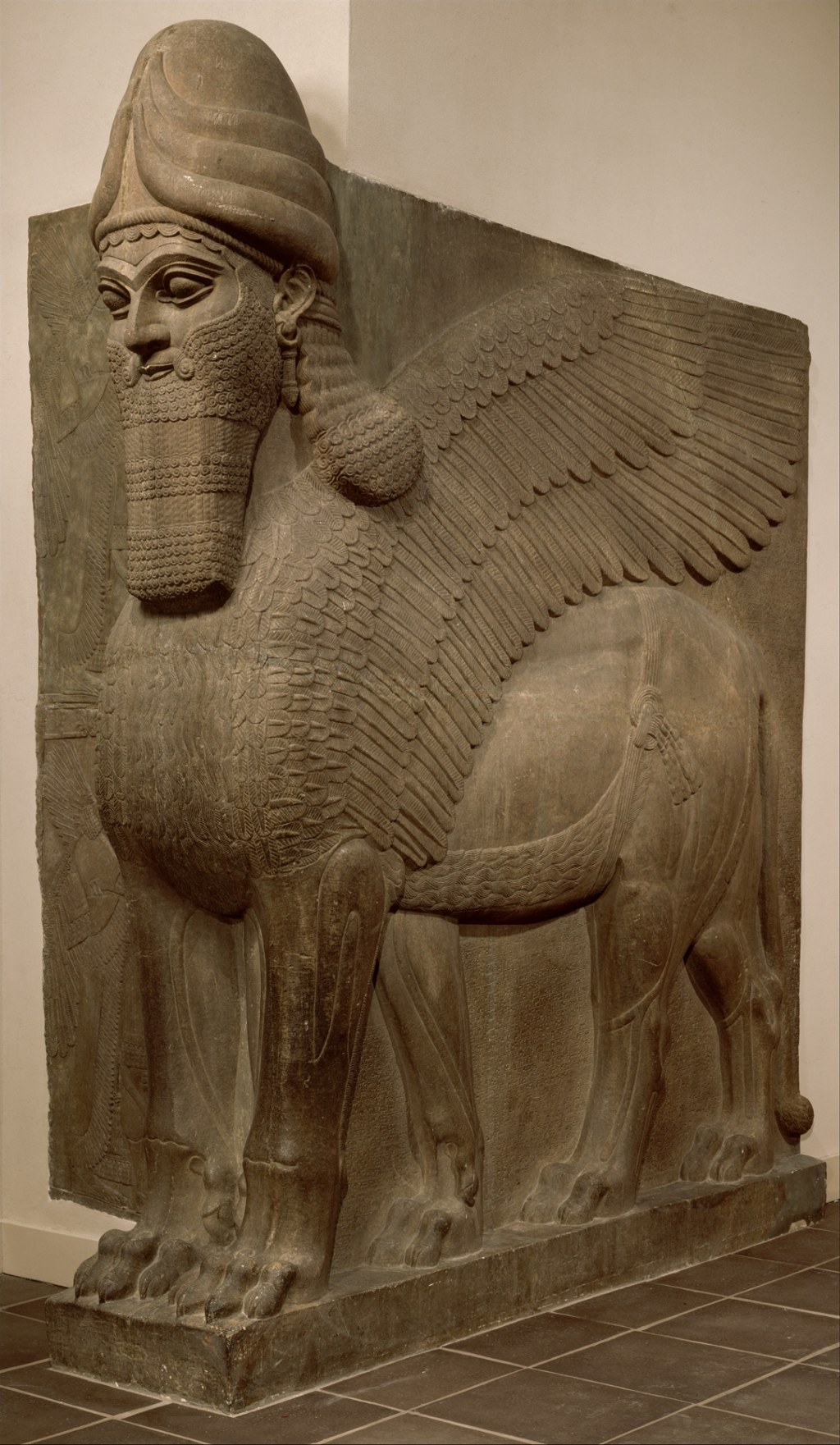Unveiling The Majestic Lion With A Captivating Human Head: Witness The Astonishment And Take Action Now!
Lion with Human Head: A Fascinating Mythological Creature
Introduction
Good People,
1 Picture Gallery: Unveiling The Majestic Lion With A Captivating Human Head: Witness The Astonishment And Take Action Now!

Welcome to a captivating exploration of the mythical creature known as the lion with a human head. Lions Enthusiast, get ready to embark on a journey through ancient legends, artistic depictions, and the symbolism behind this extraordinary creature. In this article, we will delve into the various aspects of the lion with a human head, including its origins, characteristics, and the significance it holds in different cultures.

Image Source: metmuseum.org
So, let’s begin our quest to uncover the mystery of this mythical being.
What is a Lion with Human Head?
The lion with a human head, also known as a sphinx, is a creature that has a lion’s body and a human head. This fantastical hybrid creature has been a subject of fascination and intrigue for centuries. In ancient mythology and art, the lion with a human head symbolizes power, wisdom, and guardianship.
Throughout history, the lion with a human head has appeared in various forms, representing different cultures and beliefs. Let’s explore the who, when, where, why, and how behind this intriguing creature.
Who Created the Concept of a Lion with Human Head?
The concept of a lion with a human head can be traced back to ancient civilizations, particularly in Egypt and Mesopotamia. In Egyptian mythology, the sphinx was often associated with the sun god Ra and the pharaohs, representing their divine authority and wisdom.
In Greek mythology, the sphinx was portrayed as a female creature with the wings of a bird, the body of a lion, and the head of a human or a ram. The most famous depiction of the sphinx is found in the story of Oedipus, where he had to solve her riddle to save the city of Thebes.
These mythological tales and artistic representations have contributed to the enduring fascination with the lion with a human head.
When Did the Lion with Human Head Gain Prominence?
The lion with a human head gained prominence during the ancient Egyptian civilization, which flourished around 3100 BCE. The Great Sphinx of Giza, one of the most famous examples of this creature, was built during the reign of Pharaoh Khafre, around 2500 BCE.
Since then, the concept of the lion with a human head has permeated various cultures and artistic movements throughout history. It continues to be an enduring symbol that captivates the imagination of people around the world.
Where Can You Find Depictions of Lion with Human Head?
Depictions of the lion with a human head can be found in various forms, including sculptures, paintings, and literature. The ancient ruins of Egypt, particularly the Giza Plateau, house some of the most iconic sculptures of the lion with a human head, such as the Great Sphinx and the Sphinx of Amenhotep III.
In art and literature, the lion with a human head has been a popular subject for centuries. It has been depicted in ancient Greek and Roman sculptures, Renaissance paintings, and even modern-day fantasy art.
Furthermore, references to the lion with a human head can be found in religious texts, such as the Bible and the Quran, as well as in ancient myths and legends from different cultures.
Why is the Lion with Human Head Significant?
The lion with a human head holds great significance in various cultures and belief systems. It is often associated with wisdom, royalty, and protection. In ancient Egypt, the sphinx symbolized the divine authority of pharaohs and their connection to the gods.
Furthermore, the lion with a human head represents the balance between the animalistic instincts of the lion and the intellect and reasoning of humans. It serves as a reminder of the duality of human nature and the constant struggle to find harmony between our primal and rational selves.
How Does the Lion with Human Head Inspire Art and Literature?
The lion with a human head has been a rich source of inspiration for artists and writers throughout history. Its enigmatic nature and symbolic significance have led to countless interpretations in various art forms.
In sculpture, the lion with a human head has been depicted in intricate details, capturing the majestic power of the lion and the wisdom of the human intellect. In paintings, it has been portrayed in vibrant colors, evoking a sense of mystery and awe.
Literary works often incorporate the lion with a human head as a symbolic character, representing hidden knowledge, riddles, and challenges. It serves as a test of the hero’s intelligence and courage.
Pros and Cons of the Lion with Human Head
Like any mythical creature, the lion with a human head has its pros and cons. Let’s explore the advantages and disadvantages of this fascinating being:
Advantages:
1. Symbolizes power and wisdom.
2. Inspires awe and fascination.
3. Represents the balance between instinct and reason.
4. Adds depth and complexity to art and literature.
5. Offers a connection to ancient civilizations and their beliefs.
Disadvantages:
1. Can be difficult to interpret or understand the symbolism.
2. May be associated with mystery and enigma, leading to confusion.
3. Can be misrepresented or misinterpreted in popular culture.
4. The significance may vary across different cultures and belief systems.
5. The mythology surrounding the lion with a human head may be lost over time.
Frequently Asked Questions (FAQs)
1. Is the lion with a human head a real creature?
No, the lion with a human head is a mythical creature that exists in ancient mythology, art, and literature. It is not a real-life animal.
2. What is the origin of the lion with a human head?
The concept of the lion with a human head originated in ancient civilizations like Egypt and Mesopotamia. It has been a subject of fascination and symbolism in various cultures throughout history.
3. What does the lion with a human head symbolize?
The lion with a human head symbolizes power, wisdom, and the balance between instinct and reason. It often represents the divine authority of rulers and the connection between humans and the gods.
4. Are there different variations of the lion with a human head?
Yes, different cultures and artistic movements have depicted the lion with a human head in various forms. For example, the Egyptian sphinx has a lion’s body and a human head, while the Greek sphinx has wings and a hybrid body.
5. How has the lion with a human head influenced popular culture?
The lion with a human head has inspired numerous works of art, literature, and even movies in popular culture. It continues to captivate the imagination of people worldwide and serves as a symbol of power and mystery.
Conclusion: Embrace the Enigma of the Lion with Human Head
In conclusion, the lion with a human head remains a captivating creature that has intrigued humanity for centuries. Its symbolic significance, artistic representations, and cultural interpretations continue to inspire awe and fascination.
Now, it’s time for you, Lions Enthusiast, to delve deeper into the world of the lion with a human head. Explore ancient myths, visit museums, and engage with the art and literature that pay homage to this extraordinary creature.
Embrace the enigma and unlock the secrets hidden within the lion with a human head.
Final Remarks
Dear readers, as you embark on your journey to uncover the mysteries of the lion with a human head, it is essential to remember that mythology and symbolism are subject to interpretation. The information presented in this article is based on historical and cultural references, but the true meaning and significance may vary.
Enjoy your exploration and may the lion with a human head continue to captivate your imagination for years to come.
This post topic: Lions



